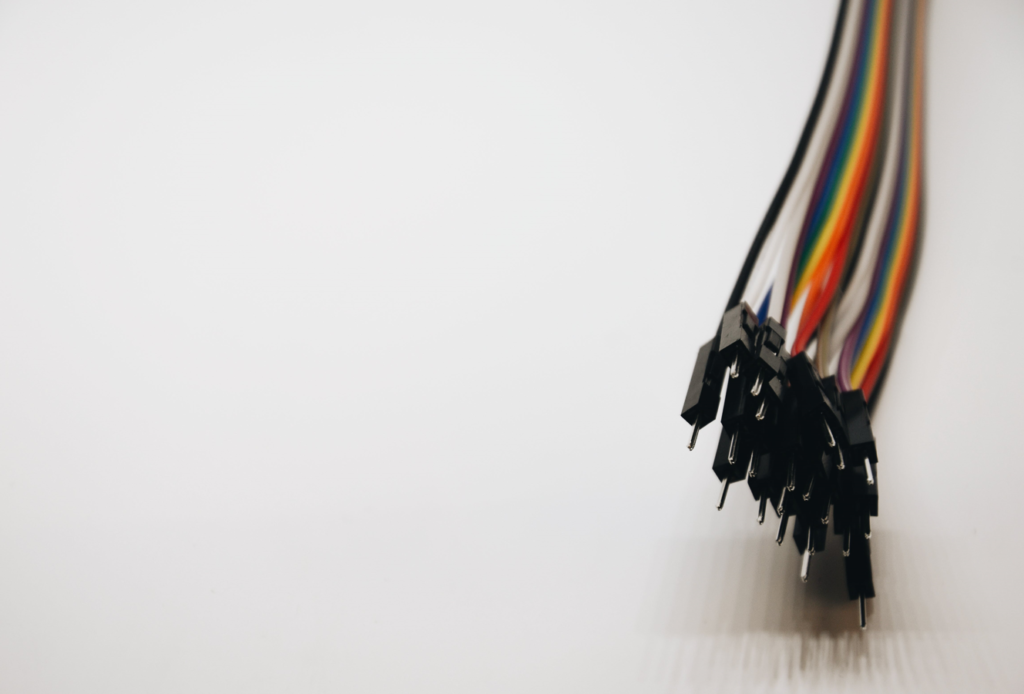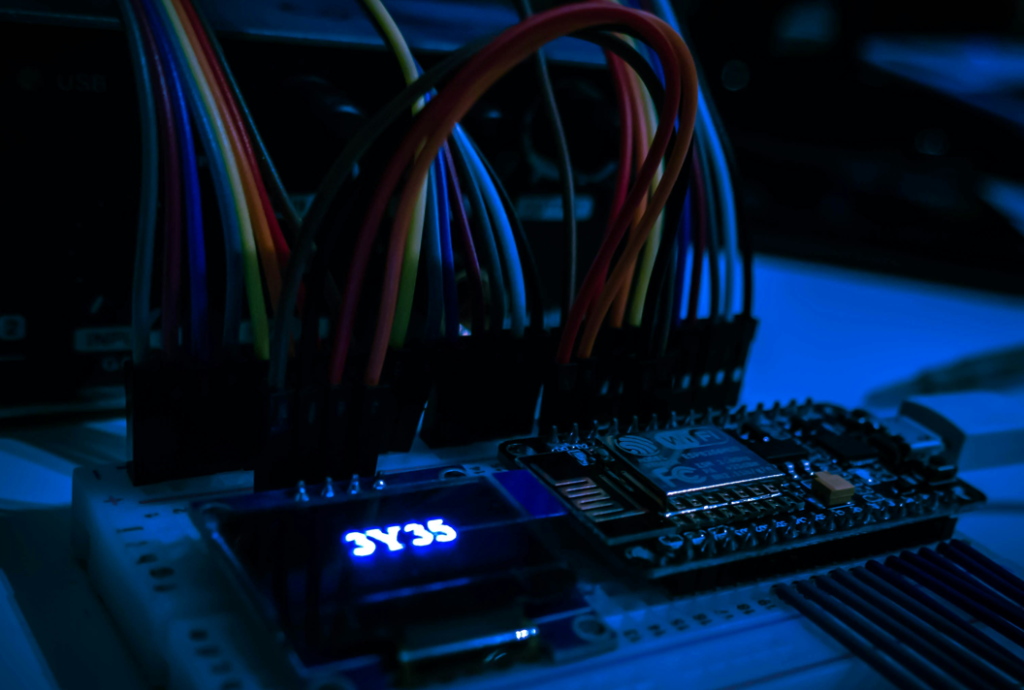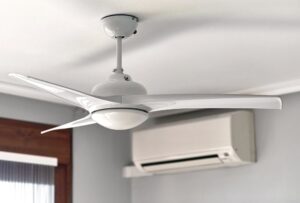Why are electrical wires coloured? This critical question pertains to safety and function within electrical systems. Colours serve as a universal language for quick identification, preventing mishaps during electrical works. Our discussion will unravel the importance of this colour coding, particularly addressing its implementation in Australian homes.
Key Takeaways
- Colour coding of electrical wires in Australian homes, such as red for live wires and blue for neutral, enhances safety by enabling quick identification of their functions and preventing incorrect connections.
- Electrical wire colour standards in Australia, including recent changes like brown for active wires, serve as mandatory guidelines for electricians to follow in order to maintain safety and compliance with international standards.
- Understanding wire colour codes is essential for electricians to prevent electrical mishaps, and while the colour coding facilitates knowledge of electrical systems, electrical work should only be undertaken by licensed professionals.

The Significance of Colour Coding in Electrical Systems
Colour coding in electrical systems goes beyond mere aesthetics. It serves as a communication tool, enabling rapid identification of each wire’s function. When you see a red wire, for instance, you know it’s a live wire, delivering voltage when connected. A blue wire, on the other hand, serves as the return path for electricity, functioning as the neutral wire. This system of identification isn’t just convenient – it’s a vital safety measure, reducing the risk of electric shock or accidents by ensuring proper connections and preventing confusion.
Furthermore, correct colour coding supports the safe replacement and modifications of wires within an electrical system, maintaining its functionality. Imagine trying to replace a wire in your circuit without knowing which colour corresponds to which function. The risk of error, and thus accidents, would increase exponentially.
The Australian electrical wire colour code aims to eliminate confusion, thereby boosting electrical safety through a distinct framework for conductor identification.
The Role of Different Colours
Examining the specifics, in Australian electrical systems, the red colour signifies a live wire. This wire represents the positive side of a circuit and carries the voltage. It’s the highway on which electricity travels to reach your devices.
On the other hand, the blue colour indicates the neutral wire. This wire is the return path for electricity after it has powered your devices. It helps to prevent overloading and electrical shock by carrying the electricity away from the appliances.
The third critical wire in an electrical circuit is the earth wire, which dons a green or green & yellow colouration. This wire acts as the safety net in the event of a fault. It provides a safe path to the ground for excess electricity, preventing electric shock and protecting both appliances and individuals from potential harm.
So, the next time you see these colours, remember their roles – red offers a path to your devices, blue takes it away, and green keeps you safe.
Colour Standards for Clarity
The Australian Wiring Rules are not optional. They serve as mandatory guidelines that electricians need to abide by during maintenance and installation of electrical systems. These rules emphasise the importance of adhering to established colour coding practices, ensuring safety, and compliance. This rigorous and robust colour code system protects all working points in an electrical system by identifying wire types and enhancing safety measures.
For instance, the green/yellow combination is exclusively reserved for earthing conductors within switchboard wiring according to the AS/NZS 3439 series. Certain signal transmissions are not to be split, and when required, a specific colour, typically red, is used for this purpose according to the regulations. It’s clear to see how these colour standards contribute to clarity, safety, and efficiency in electrical systems.
Evolution of Wire Colour Codes
Similar to language, the colour coding system for electrical wiring in Australia has undergone evolution over time. From the early development of electrical systems in the country, historical wiring colours date back to the roots of Australian electrical systems. Over the years, as the systems advanced, the wire colour codes underwent several changes to keep up with the times and technological advancements.
The most recent significant shift occurred in 2018, when Australia adopted new wiring colour standards under the AS/NZS 3000:2018 Electrical Installations Wiring Rules. This change was initiated to streamline compatibility and minimize confusion during electrical installations and repairs. The aim was to align with global standards, aiding in wire function identification, and ensuring safety.
From Past to Present: A Timeline
The journey of colour coding in Australian electrical systems has been long and transformative. The adoption of colour coding started as early as 1894 and became a regulated code in 2000. Prior to the 2018 standard update, the colour coding for Australian electrical systems was as follows:
- Red was used for active wires in single-phase and for Phase 1 in three-phase systems.
- Black served as the neutral wire in both single-phase and three-phase systems.
- White served as the neutral wire in single-phase systems.
- Green was used as the earth wire in both single-phase and three-phase systems.
In 2018, Australia introduced a new set of wiring colours: brown for active wires, light blue for neutral, and green-and-yellow for earth in both single-phase and three-phase wiring systems. These regulated adoptions and updates were crucial for ensuring safety and maintaining alignment with international electrical standards.
International Influence on Australian Codes
The 2018 update was not a standalone decision by Australia. It was part of a broader move to align Australian wiring colour codes with global standards, aiming to streamline compatibility and minimize confusion in electrical installations and repairs. This harmonization with European electrical colour codes permits the use of European colours in some circumstances within Australia. The IEC wiring colour codes are widely recognized for standardized wire identification.
While the change in electrical wire colours was made to align with global standards, the functionality of each wire remains consistent regardless of colour. This consistency ensures that brown always signifies Live 1 (L1), black stands for Live 2 (L2), and grey represents Live 3 (L3), thereby maintaining safety and clarity.
Identifying Wires Within an Electrical Circuit
Decoding the multicoloured maze of wires within an electrical circuit is a critical task. It’s like reading a map – each colour represents a specific path that the electrical current follows. In Australian homes, brown is typically the colour for active wires, and blue for neutral wires in single-phase electrical systems. In three-phase wiring in Australia, brown is used for Phase 1 and functions as a live wire, while black is used for Phase 2 and grey for Phase 3, both also functioning as live wires. Blue is used as neutral, and green and yellow are used for earth.
Colour coding plays an especially significant role in low-voltage three-phase systems. The unique colours of each phase wire and the neutral line ensure the stability and balance of power distribution. It’s like a well-coordinated dance, where each dancer knows their role and follows the rhythm, contributing to the harmony of the entire performance.
Live, Neutral, and Earth Wires Explained
The brown live wire is like a highway, delivering electricity to power your devices. The blue neutral wire then acts as the return path, carrying the electricity away from the appliances and preventing overloading and electric shock. This continuous flow of electricity between the live and neutral wires powers our homes, keeping our devices running and our lights shining.
The three players in this electrical ballet, which involves electrical circuits, are:
- The live wire, which carries the current from the power source to the appliance.
- The neutral wire, which completes the circuit and carries the current back to the power source.
- The green or yellow earth wire, which provides a path for excess electricity to be safely diverted into the ground, protecting both appliances and individuals from potential harm.
The earth wire is the unsung hero, quietly ensuring our safety as we go about our daily lives.
Special Colours for Specific Uses
Beyond the basic electrical wiring colours, there are special colours for specific uses. Yellow electric wires, for instance, are used to transmit power and are not typically used for wiring outlets for common plug-in electrical devices.
Signal wires have a unique role in connecting a point to the primary electrical grid. These electrical wires are given distinct colour coding to offer high visibility for workers and residents, distinguishing them from the standard wiring systems. Understanding these special colours and their uses is another layer of knowledge in the complex world of electrical wiring.
Safety Measures and Colour Coding
Colour coding serves more than just clarity and efficiency; it is equally about safety. Accurate wire colour coding is crucial for reducing the risk of electrical accidents by allowing the proper identification of wire functions. Professionals in the electrical industry prioritize safety to avoid confusion and prevent potentially dangerous situations.
Wire colour codes play a significant role in electrical safety by aiding in the prevention of electrical overloading and faults. It’s like a language that, when understood, helps to maintain the smooth and safe operation of electrical systems.
Preventing Electrical Overloading and Faults
Correct wire colour identification is vital to prevent dangerous situations such as electrical overloading and faults, by ensuring the proper connection of wires in the electrical system. Electrical wiring colour codes are critical in preventing safety issues such as electrocution, circuit malfunctions, and fire hazards due to arcing or overheating from incorrect wattage or damaged wiring.
Common indicators of electrical issues include:
- Flickering lights
- Tripping circuit breakers
- Abnormal smells
- Sparking appliances
- Warm outlets
- Discoloured switches
Any of these signs warrant an immediate inspection by a licensed electrician.
The Dangers of DIY Electrical Work
While understanding wire colours is beneficial, it’s important to remember that electrical work is not a DIY project. Australian wiring colour codes are intended as guidelines for professional electricians, not for unlicensed electrical repairs.
Unexpected contact with live wires can occur as a result of misunderstanding the wire colours, presenting serious risks. Licensed electricians are trained to adhere to regulations and are aware of all safety concerns related to the electrical circuit, making their expertise crucial for home rewiring projects.

Professional Electrician Insights
Listening to the experts, professional electricians stress the significance of wire colour codes for safety, efficiency, and avoiding confusion during electrical work. These experts rely on the established wiring colour codes for enhanced efficiency and safe handling of live wires and powered cables.
Maintaining consistency in wire colours is advocated by electricians to prevent confusion and promote safe electrical service provision. Aware of the modifications to wiring colours, professional electricians reduce the risk of confusion and maintain safety during electrical works.
Expert Opinions on Colour Coding
Electricians emphasize the significance of being adept with both the old and new wiring colours to guarantee electrical safety and to ensure seamless integration with existing circuits. Professional knowledge of existing electrical colour codes is essential to safely conduct repairs and renovations without causing compatibility issues.
Electricians are systematically trained to comprehend wire colours, which helps in averting dangerous mistakes that could lead to electrical shocks or fires. Colour coding standards are recognized by technicians as a key factor in carrying out safe and efficient electrical maintenance tasks.
Case Studies: Real-Life Wiring Scenarios
Understanding wire colours is crucial for electricians to quickly address and prevent potential electrical mishaps in Australian homes. Let’s look at some real-life wiring scenarios. There was a case where correct wire colour identification by an electrician revealed deteriorating wire insulation, which could have otherwise caused short circuits.
In another case, electricians were able to safely rectify issues with worn-out sockets by observing the correct wire colours, thus preventing possible sparks or fire hazards. These examples underscore the significance of understanding wire colours in maintaining electrical safety in homes.
Navigating Australian Electrical Wiring Colour Codes
Interpreting Australian electrical wiring colour codes resembles reading a complex map. It’s an essential skill for understanding electrical currents, ensuring proper installation and maintenance, and preventing electrical shock. In single-phase wiring, including lighting circuits, the Australian Standard AS 3000 introduced in 2018 requires the colour Brown for the Active wire, Blue for the Neutral wire, and a combination of Green & Yellow for the Earth wire.
For three-phase wiring in Australia, the standard colours specified by AS 3000 are:
- Red, White, and Blue for the live wires, with White uniquely designating the Live 2 (L2) conductor.
- Brown, Black, and Grey as the phase colours for three-phase lighting circuits.
- Blue for Neutral.
- Green & Yellow for Earth.
Single Phase and Three Phase Colour Distinctions
The colours in a single-phase system and a three-phase system have their unique codes. In Australian single-phase systems, the active wire is identified by the colour Brown, while the neutral wire is coded Blue. Additionally, the earth wire is distinguished by the colours Green and Yellow.
Meanwhile, Australian three-phase wiring typically utilizes Red for Live 1, White for Live 2, and Blue for Live 3. Variations include Brown for Phase 1, Black for Phase 2, and Grey for Phase 3, especially in lighting circuits. For three-phase systems, the neutral wire is coded Black, and the earth wire is coded Green or Green & Yellow.
Differentiating colour codes between single-phase and three-phase wiring is crucial for:
- Understanding electrical currents
- Ensuring proper installation and maintenance
- Preventing electrical shock
- Guaranteeing the correct connection of conductors.
When to Call a Professional Electrician
While a comprehensive understanding of Australian electrical wiring colour codes is essential, it’s worth noting that electrical work is not meant for DIY attempts. Certified electricians ensure that all wiring in the household is executed safely and correctly. Consulting with electricians who have current knowledge of the wiring colour changes is crucial for safety and preventing confusion during electrical work.
Routine electrical system inspections by a licensed professional are advised for residents of older homes, even if no problems seem noticeable. In the event of an electrical emergency, immediate contact with emergency services and professional electricians is imperative to prevent risks to life and property while ensuring personal safety.
If you’re based in Sydney and you need a certified professional electrician, then you need us here at Mr Sparky. Our commercial and residential electrical services are available over Sydney, and we offer a wide range of electrical services, from routine electrical inspections to installation and upgrading of wiring systems – we’re the team for you.
Summary
Electrical wiring colours are not just a rainbow of hues. They are a language, a system of safety, and a guide to efficient electrical installations and repairs. From the vibrant red of live wires to the calming blue of neutral wires and the protective green or yellow of earth wires, each colour plays a specific role in the electrical circuit.
Understanding these colours, their changes over time, and their significance is crucial for both professionals and homeowners. While electrical work is not a DIY project, having a basic understanding of these colours can help homeowners communicate more effectively with electricians and understand the work being done in their homes. Remember, when in doubt, always call a professional electrician to ensure your safety and the proper functioning of your electrical system.
Frequently Asked Questions
Why are electrical wires coloured?
Electrical wires are coloured to indicate their purpose and function, with different colours representing different roles such as grounding, hot wiring, and more. This system helps ensure safety and proper installation of electrical systems.
What colour are electrical wires in Australia?
In Australia, the colours of electrical wires for single-phase wiring are: Active – Brown, Neutral – Blue, Earth – Green & Yellow.
What do the different Coloured wires mean?
The protective ground is green or green with a yellow stripe, the neutral is white, and the hot single-phase wires are black and red for a second active. Three-phase lines are red, black, and blue.
Can the same colour be used for different wires?
No, each wire in an electrical system has a specific colour to prevent confusion and ensure safety, as emphasized by the Australian Wiring Rules.
Why was there a change in wiring colour codes in Australia in 2018?
The wiring colour codes in Australia were changed in 2018 to align with global standards, aiming to improve compatibility and minimize confusion during electrical work.











